
Today I am writing about place. Specifically about how do you capture the essence of place? Stories, memory, land and an invitation. Word count = 0. Work in progress…

Today I am writing about place. Specifically about how do you capture the essence of place? Stories, memory, land and an invitation. Word count = 0. Work in progress…
This morning at BKI we had a memorial service to remember everyone in the community who has passed on (remembering our elders).
Gloria and Ross Kinsler were mentors and friends of Ched and Elaine’s for more than 30 years. As Presbyterian mission co-workers in Central America they promoted popular theological education and organized Sanctuary solidarity. Since
2014 BCM has honored their legacy in our Kinsler Institutes. Ross went home to God in December; Gloria lives with dementia at a skilled nursing facility in Pasadena, CA. We give thanks for their faithful work and witness.
Rev. Murphy Davis, co-founder of The Open Door Community in Atlanta, GA, worked for decades in prison justice and homeless advocacy. She passed in October 2020 after a 25 year battle with cancer, chronicled in her memoir Surely Goodness and Mercy (2020).
A table is covered with a purple cloth for an altar, though we’re square cubes we are in a circle – we reach out (in zoom, participants are encouraged to hold their hands up as if to make contact with those to either side of them in gallery view). On this morning we have a memorial for Ross Kinsler and Murphy Davis… we light two candles and have flowers for Gloria, for all those ‘gone to glory’ to ‘join the cloud of witnesses’. The table is set. Invite people at the table to share stories… we hear remembrances from people who know these elders well as a litany of names rolls down the chat.
Love is a harsh and dreadful thing. It requires us to give and receive.
– Mother Theresa
We are a living memory – activists, disciples, Holy Fools, followers of freedom pathways, the ways of the water keepers, the inspiration of artists and poets… they do not die, they multiply.
I share this link to the Murphy Davis campaign…”Let’s Get Well”. I think it is a beautiful thing to rally for encouragement and healing – to lift each other up. As someone who had rallied, and rallied and rallied where this has felt like a fight, I love the idea of rallying to encourage and affirm one another…

In answer to Seamus Heaney’s Station Island and Pablo Neruda’s The Heights of Machu Picchu, Berger unmasks the worldview of westward expansion from architect Eero Saarinen’s arch in St. Louis to the Golden Gate in a way that subtly and mystically taps the unconsciousness of the intended audience. When she writes “We never entered the West on bended knee,” the impurity of language used in this epic creates tension between discourses and creates a charge or pressure on each sentence that pushes the reader toward declaring an allegiance. Drawing on historical documents, the Latin Mass, and multivalent voices, Berger moves through the anguish of unintended consequences and leads the reader through the “ghost dance” of feeling to the powerful Pacific Ocean, which enters human consciousness like a dream. Entangled historical memory, climate crisis, and inverse expansionism compress into a spiritual reckoning to face the world to come. (January 2019). Book available here…
We bury his heart, but not his love, never his love.
Rose Berger, Bending the Arch
Alison McCrary is a tribal citizen of the Ani-Yun-Wiya United Cherokee Nation, a social justice lawyer, Catholic activist, restorative justice practitioner and a sought-after speaker on social justice, spirituality and liberation.
“Accountability IS love. We only speak truth to those we love”
– Alison McCrary


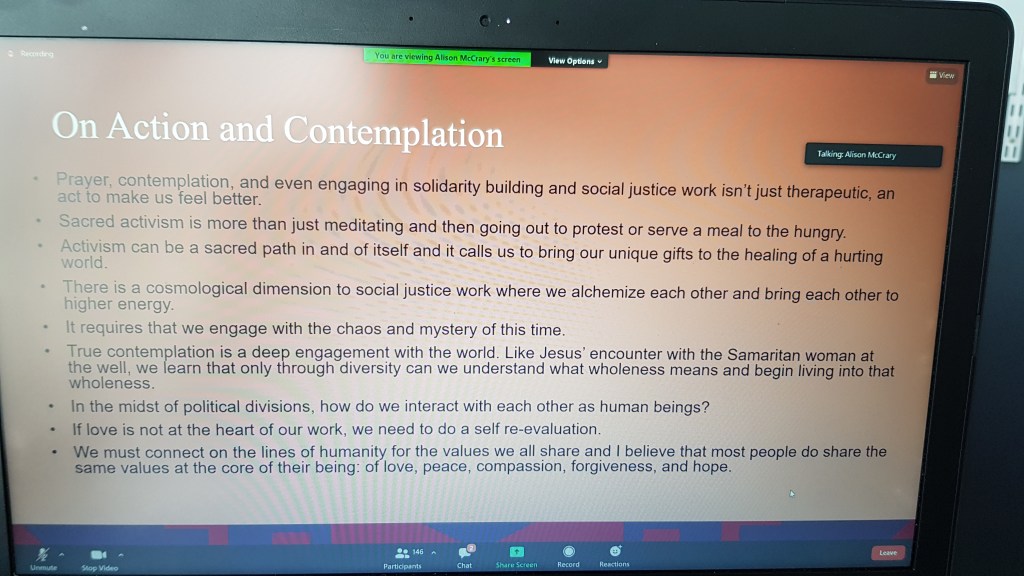
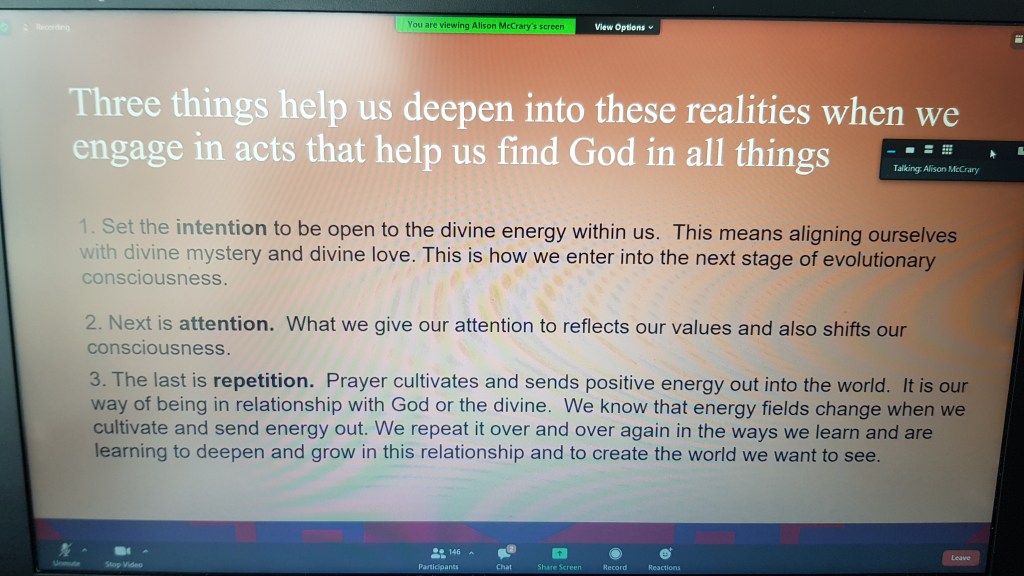

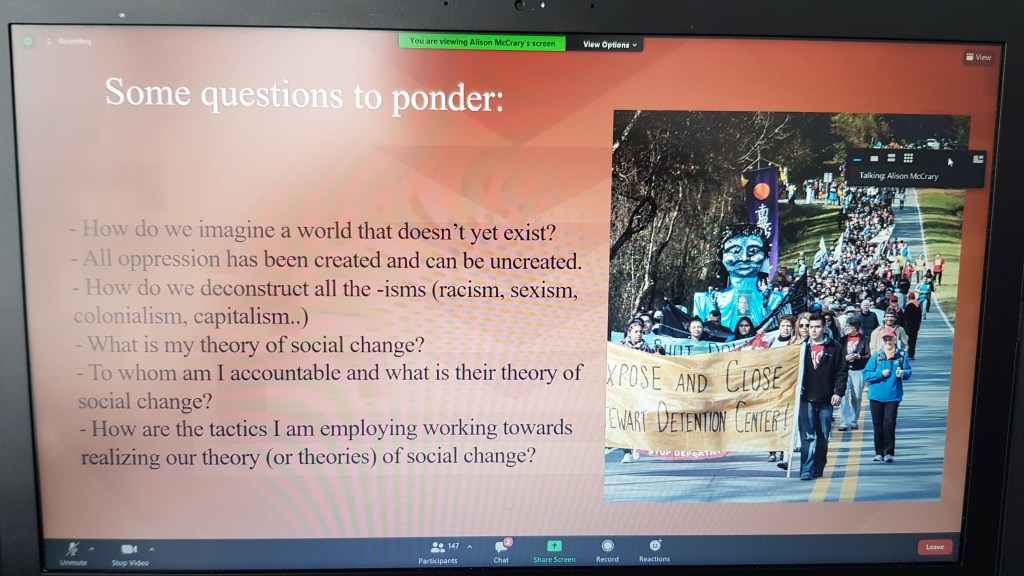
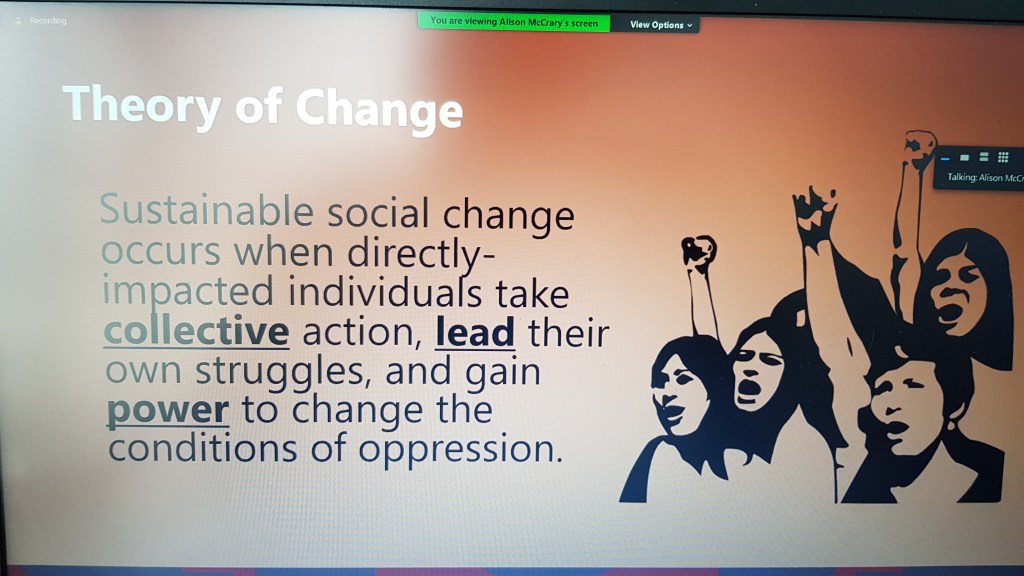
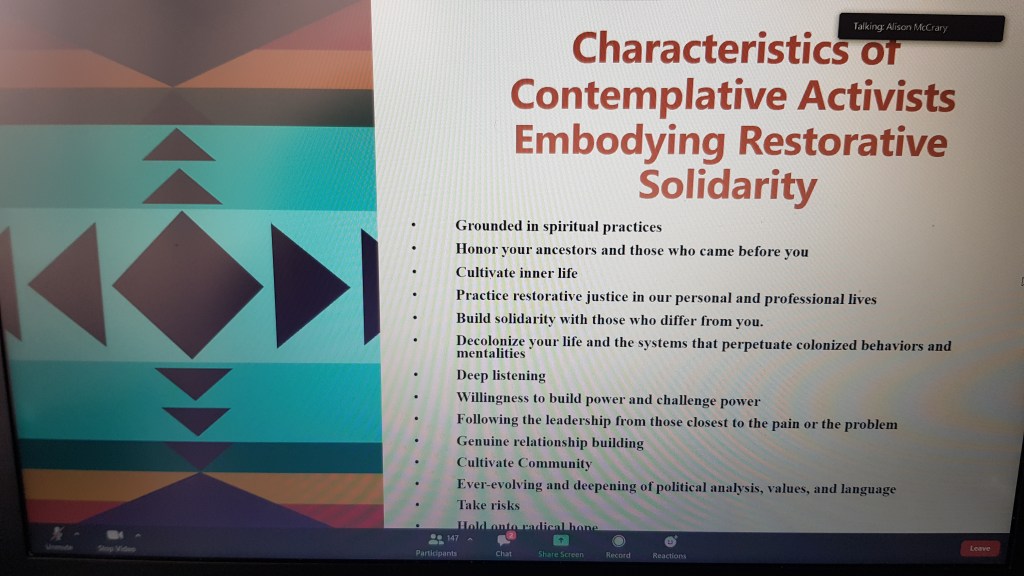



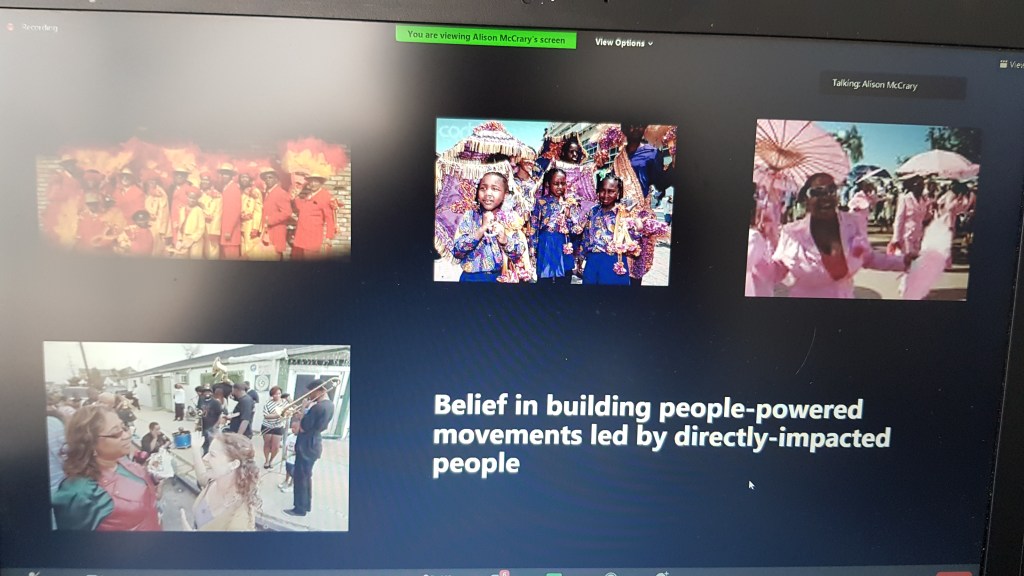
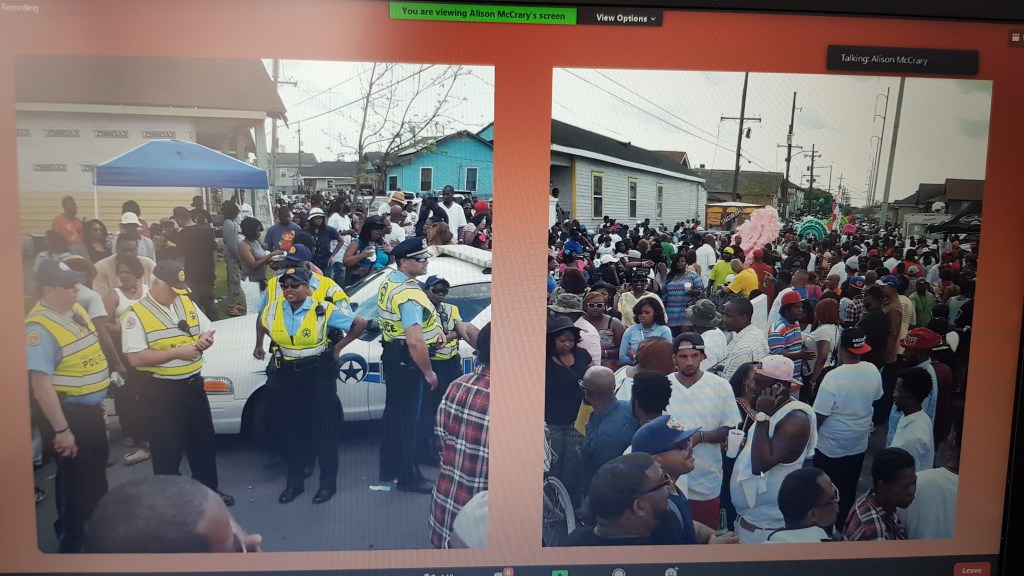
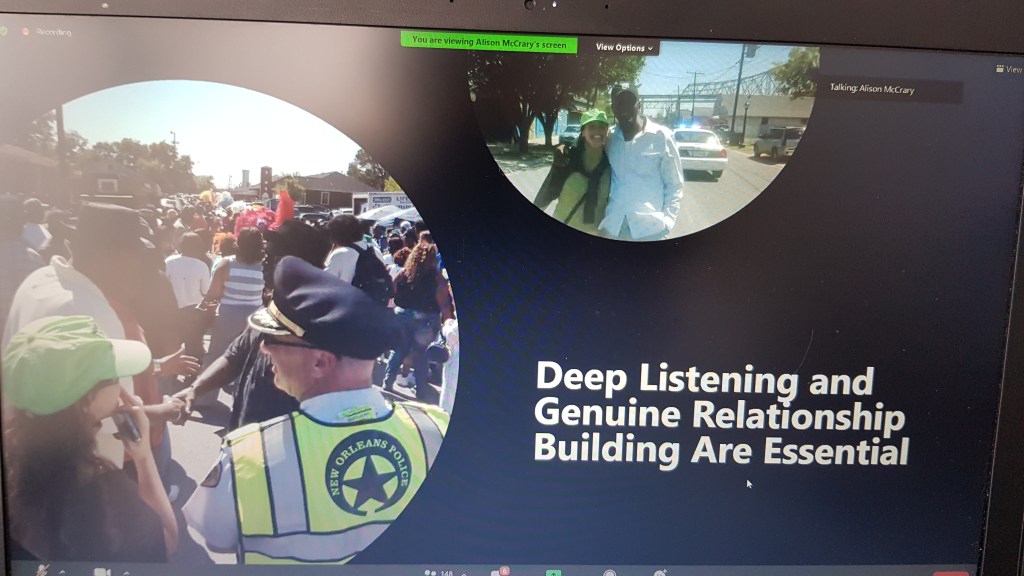
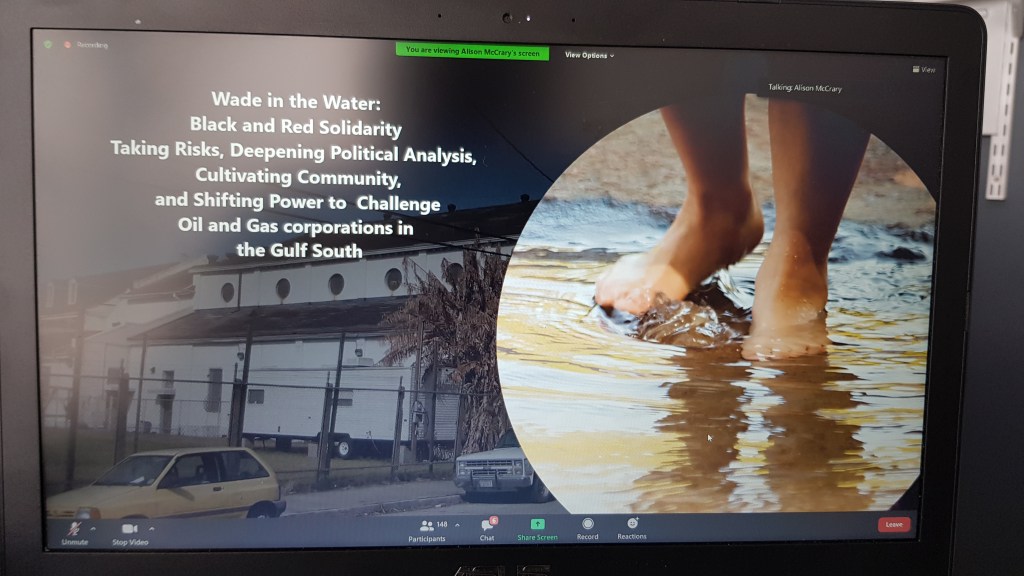
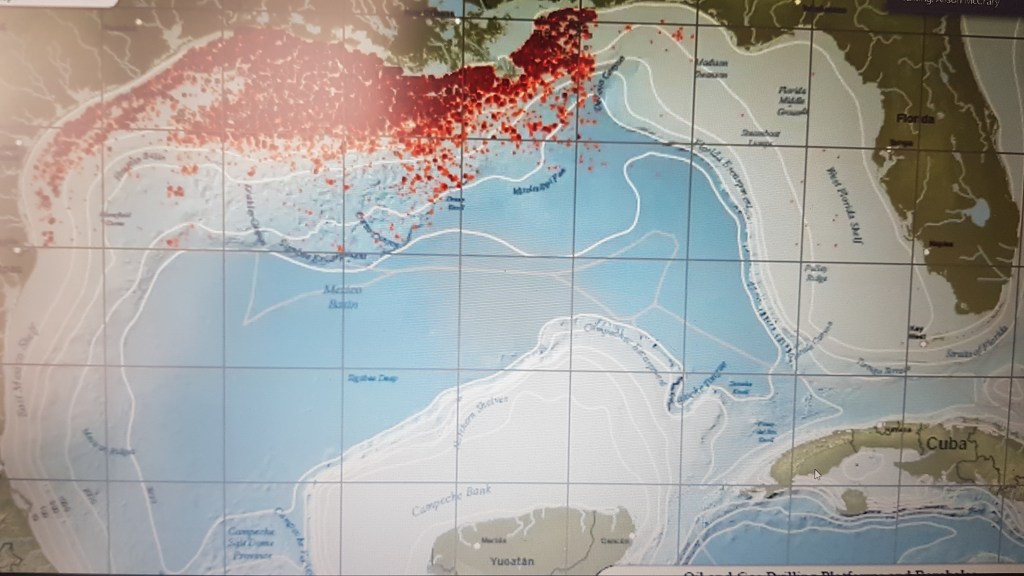

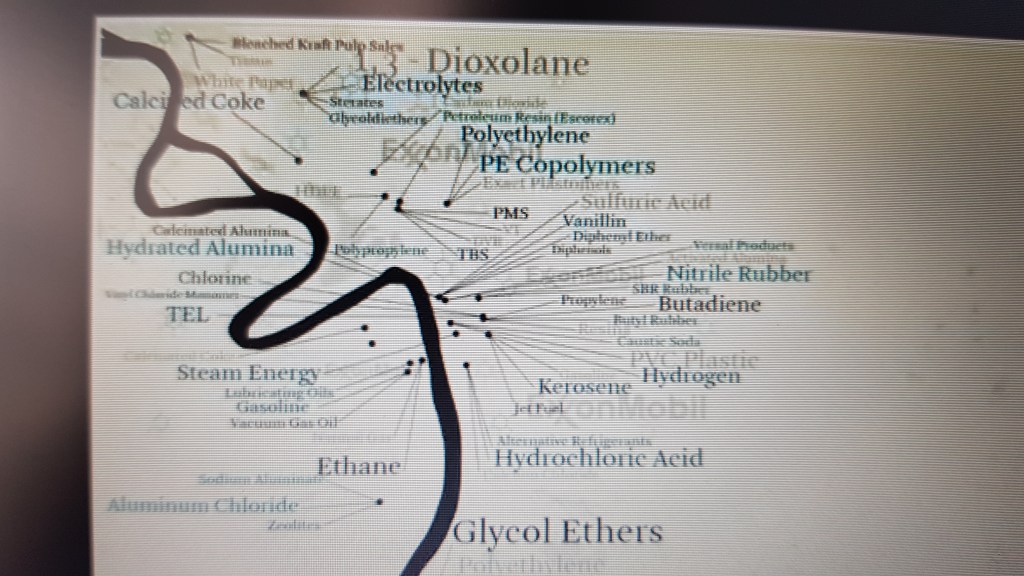
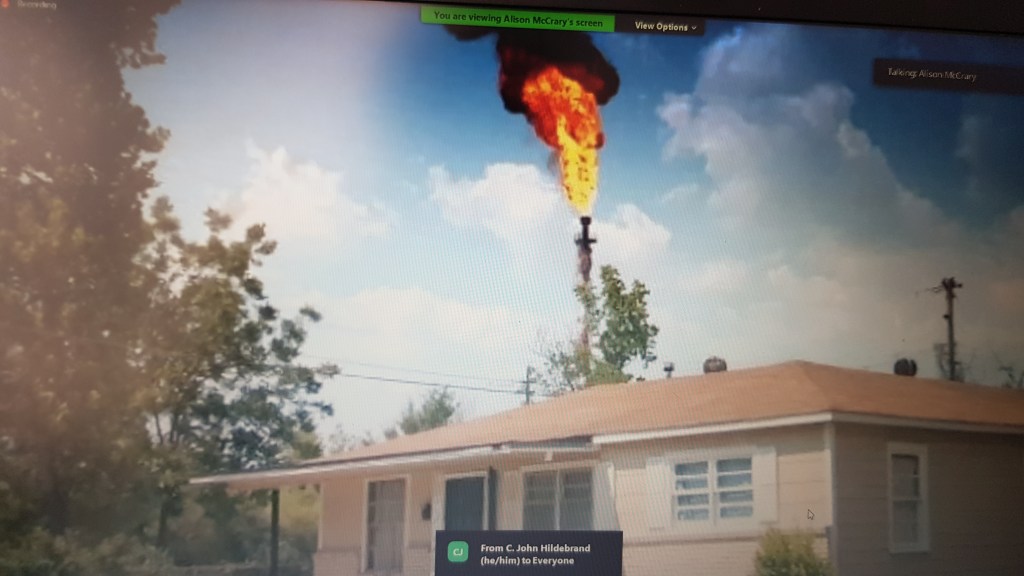



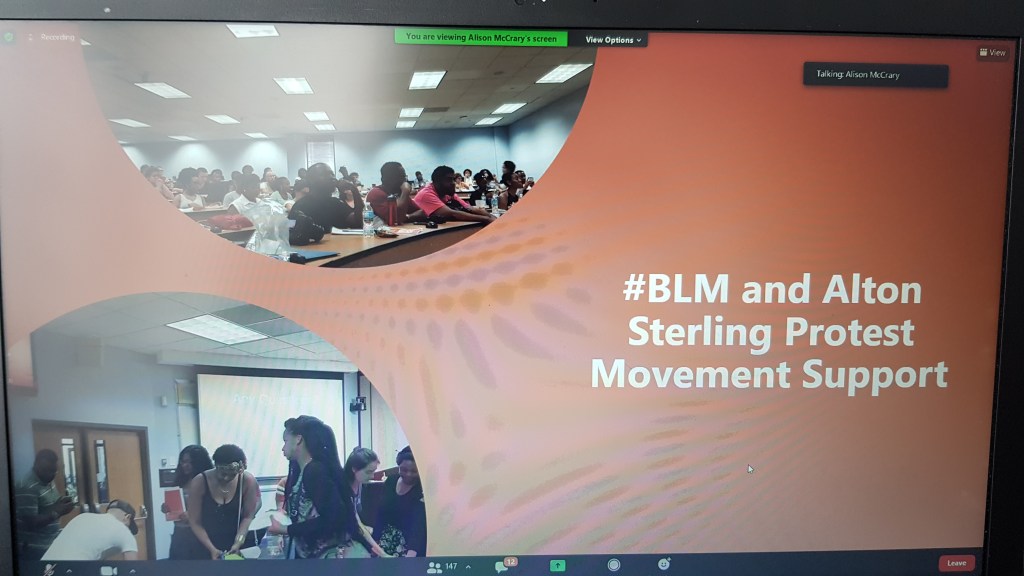
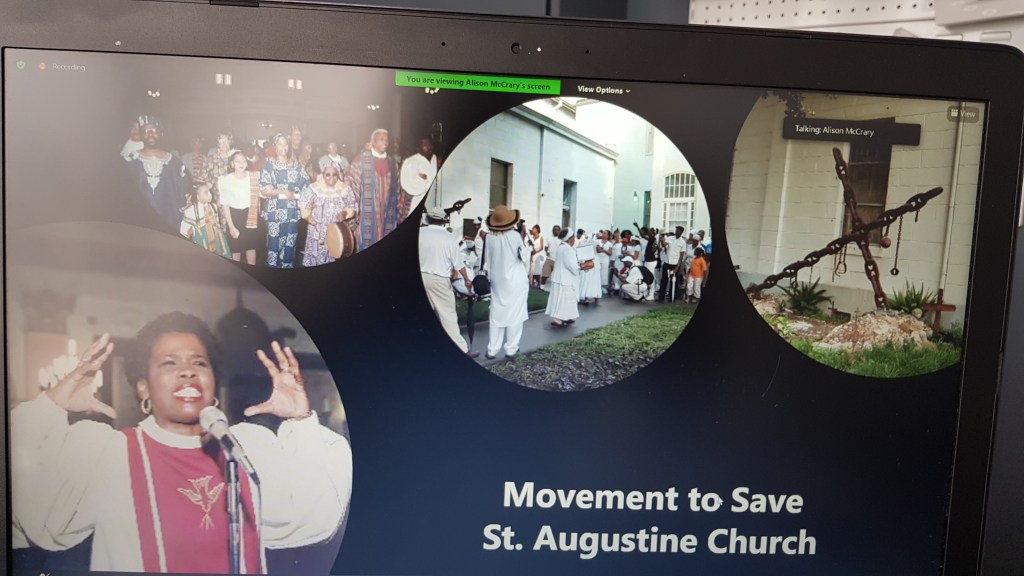
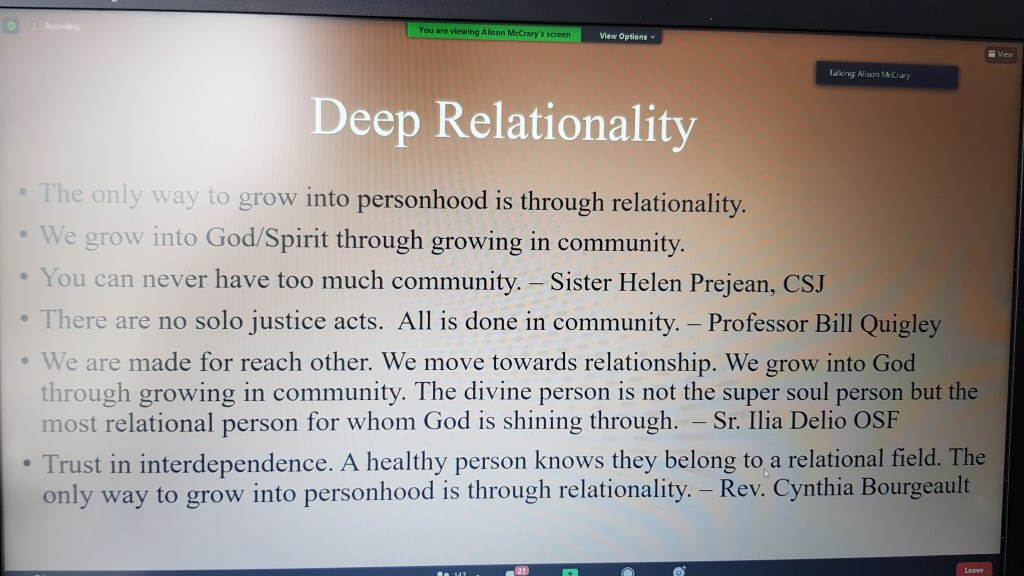

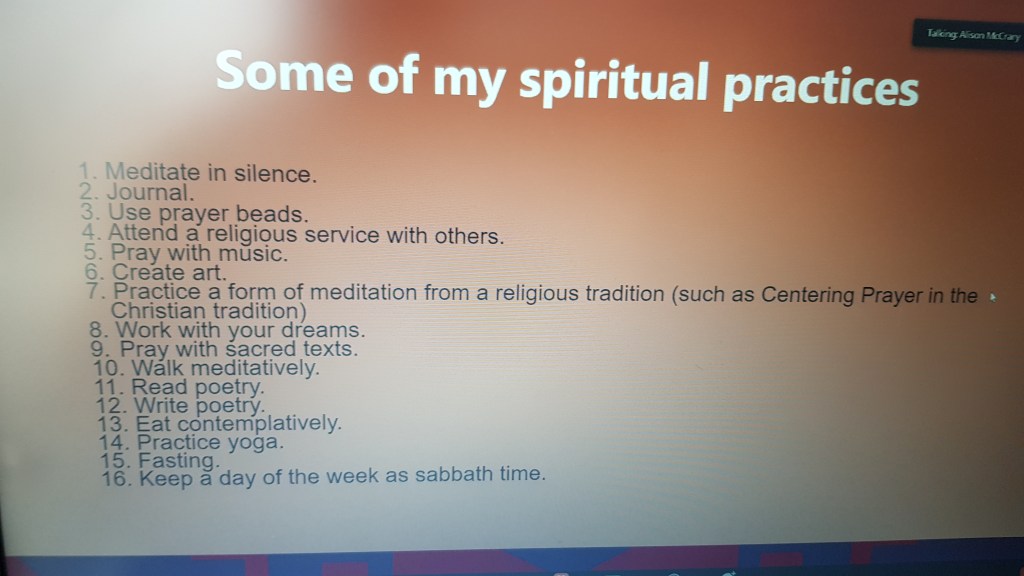





There are symbols: a compass, an hourglass, entangled trees, an uncaged canary…
-is there a balm in this thickness of loss?
– can our scars point the way through
– what story will take us to firmer ground?
– whose silence will we hear finally?
“Our community lost things we didn’t know we could lose.”
The Story of the Underground Railroad, Warren Cooper
“Joshua is told he is very old but ‘there is very much land that still remains’. With this promise is a problem: chosenness, displacement, privilege, power… The land is not possessed by us, as long as you are connected to the land you have a lineage, and also a legacy. Find that the land is God’s, and you will find it is abundant. Joshua’s strength and courage isn’t conquering or capitalist but his fidelity. He is old, there is very much land that remains to be taken… spaces within and outside of ourselves that others can’t touch, what will you create room for?” Dr Starsky Wilson, Children’s Defense Fund
How do we find this land?
Can be decolonising your bookcase or wardrobe, clear out the colonised space to make room for new, enter the wild/reconnect. With COVID there is an opportunity while outside of the traditional sanctuary spaces. What does it look like in our churches to create tension around the idea of ‘ownership’. The gift is the opportunity to steward, not the owning. Reparations? Understand that what you have may not always be yours. Jubilee reminds us that who owns and has rights to accumulate/stuff is a temporal state. There is no time like a pandemic to resdistribute.
New short film project Radix will speak to stories of resistance and resilience: land, people, colonisation, race… watch “Sowing Seeds of Change” here and follow them on Insta and Facebook to watch new stories as they become available.
Congratulations to Ched and Elaine on the release of their new book! “Healing Haunted Histories tackles the oldest and deepest injustices on the North American continent. Violations which inhabit every intersection of settler and Indigenous worlds, past and present. Wounds inextricably woven into the fabric of our personal and political lives. And it argues we can heal those wounds through the inward and outward journey of decolonization.”

Whenua, in te reo, means land and is the same word for the placenta. That which nourishes. That which we come from, that to which we return.
It is a tradition to plant the placenta and umbilical cord beneath a tree, in a special place, in the place you come from. You are intimately connected to the land. The tree grows as you grow. The landscape is changed because of your presence in the world, because you put something into the land that nourishes it and then the land produces the food that nourishes you in turn.
You will always be connected to this place.
We are children of Papatūānuku, the Earth Mother. How often, when faced with a decision and uncertain what to do, do we go home, connect with where we come from, listen to and learn from the land to get perspective and clarity?
What remains when land and sky are gone? What endures? Listen to the story you were born into.
Whenua/earth #advent2020
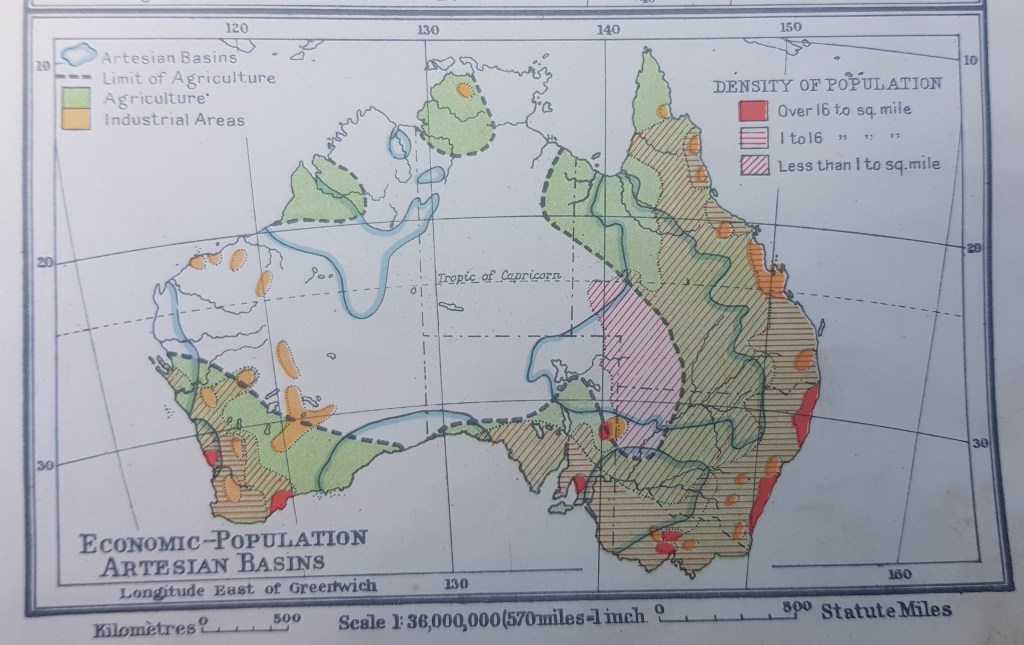
Continuing to consider this years theme for NAIDOC week of “Always Was, Always Will Be” with the Collins Australian Clear School Atlas New and Revised Edition.
This image shows Economic-Population. There’s a sense looking at a map like this that there’s still Terra Nullius – land where no people are and no work is happening. You can see that the measure used for ‘economy’ – doesn’t recognise the agriculture or trade practices of Aboriginal people.
Recognising Aboriginal people must surely need to begin by recognising the profound, enduring relationship and connections they bear with the land.
“Aboriginals engaged in seed propagation, irrigation, harvest,
― Bruce Pascoe, Dark Emu
storage, and the trade of seed across the region.”
When you say/hear an Acknowledgement of country, does considering the above make you reconsider what it means? “We acknowledge that we gather on the lands of which Aboriginal people have been custodians since time immemorial, and pay our respects to elders past, present and emerging”
The dashed line above denotes the ‘limits of agriculture’ (at least for the 60s-70s when this atlas was published). What can we learn about what is considered ‘agriculture’ from this image? Who gets to determine that?
Does the image raise any considerations for balance?
This years theme for NAIDOC week is “Always Was, Always Will Be”. I’m interested in finding ways to creatively and contemplatively explore what this means as a white-presenting Settler in this place.
I love old books and paper, I’m going to use some of these as a lens: First up is the Collins Australian Clear School Atlas New and Revised Edition.
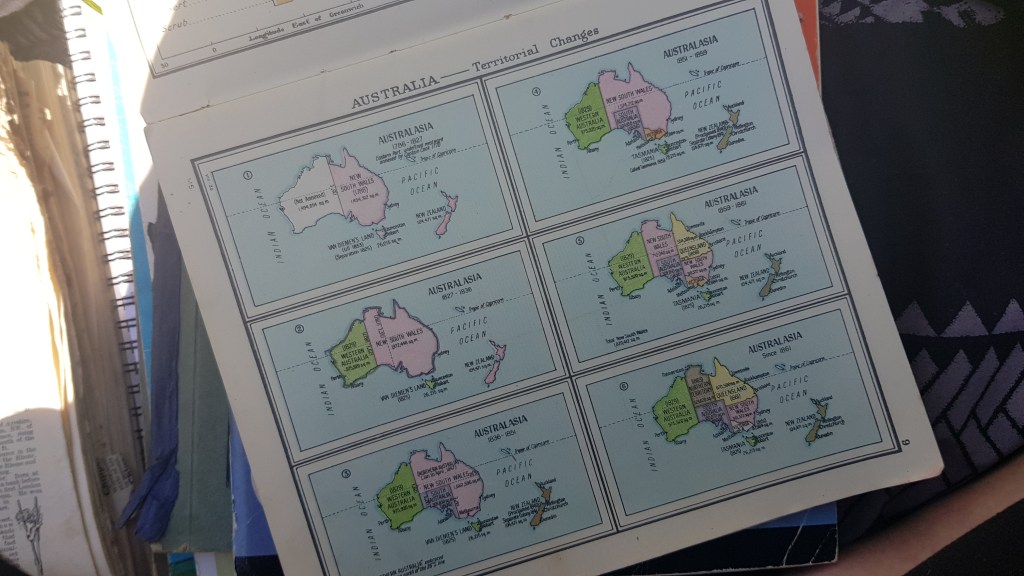
These maps show the territorial changes (6) between 1786 and 1861. Here they are shown with an overlay of the AIATSIS map of Indigenous Australia. It’s hard not to liken that to a shadow, a haunting overlay, crossing and connecting countries and communities across territorial lines drawn and re-drawn.
What arises when you look at these? Has your home country/town been in different states?
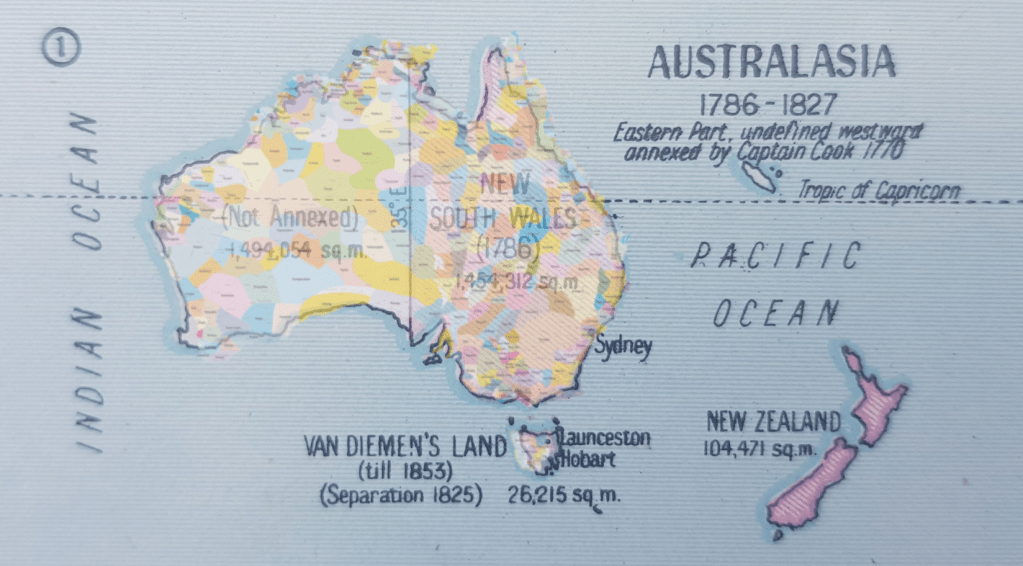
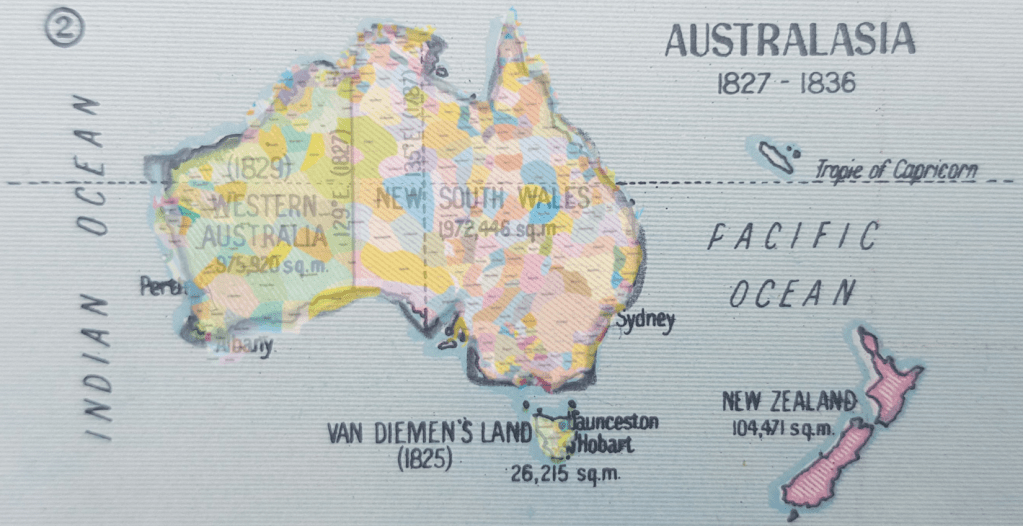
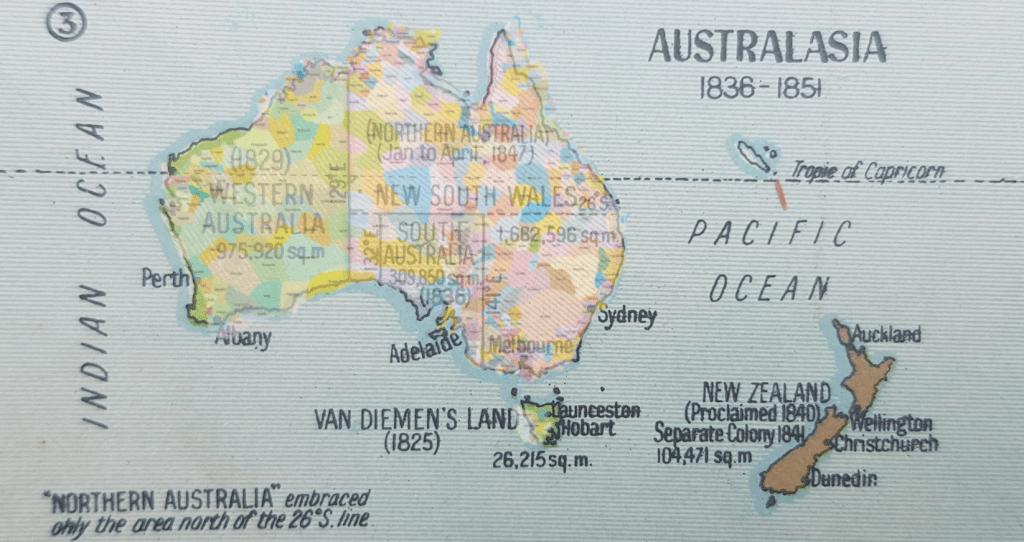
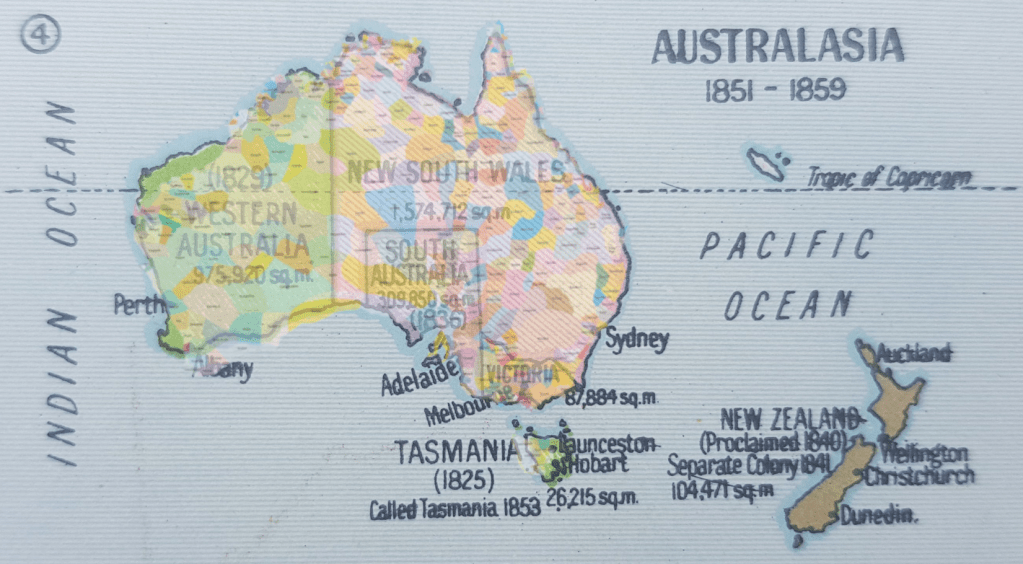

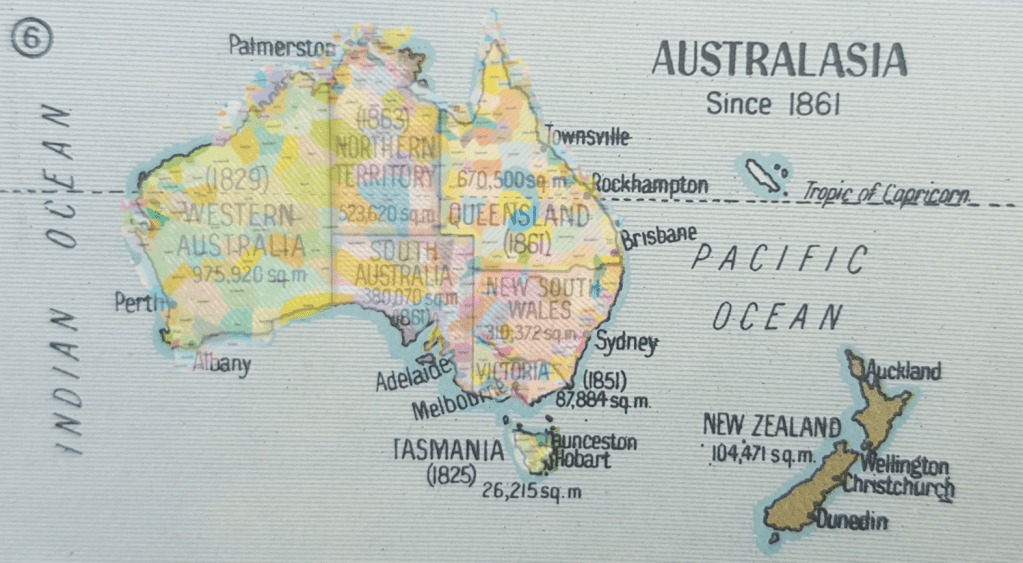
It’s important to understand that when you are speaking to an Aboriginal or Torres Strait person and recognise that their cultural tale is millenia-long that the image of Australia they might imagine is the reverse: Aboriginal land with state and territory lines superimposed on top. When Aboriginal and Torres Strait Island people say: “Always was, always will be, Aboriginal land” this is what they mean… these many countries and territories existed prior to 1786 and they are still here.

Yesterday, Gomeroi woman, Rachel McPhail, living on Wiradjuri country did a call out to challenge Australia Post to encourage Aussies to include the traditional Nation name in the extra address line when sending letters and packages. To support this idea, you can check traditional Nations at AIATSIS.gov.au.

The Maribyrnong river in Footscray on the lands of Wurundjeri Woi Wurrung and the Bunurong peoples of the Kulin Nation
‘Aboriginal people talk about Country in the same way that they would talk about a person: they speak to Country, sing to Country, visit Country, worry about Country, feel sorry for Country, and long for Country. People say that Country knows, hears, smells, takes notice, takes care, is sorry or happy… Country is a living entity with a yesterday, today and tomorrow, with a consciousness and a will toward life’.
Deborah Bird Rose ‘(08) Encyclopedia of Religion and Nature
A poem by Ngāti Hine/Ngāpuhi writer Nadine Anne Hura
Rest now, e Papatūānuku
Breathe easy and settle
Right here where you are
We’ll not move upon you
For awhile
We’ll stop, we’ll cease
We’ll slow down and stay home
Draw each other close and be kind
Kinder than we’ve ever been.
I wish we could say we were doing it for you
as much as ourselves
But hei aha
We’re doing it anyway
It’s right. It’s time.
Time to return
Time to remember
Time to listen and forgive
Time to withhold judgement
Time to cry
Time to think
About others
Remove our shoes
Press hands to soil
Sift grains between fingers
🍃 Gentle palms
Time to plant
Time to wait
Time to notice
To whom we belong
For now it’s just you
And the wind
And the forests and the oceans and the sky full of rain
Finally, it’s raining!
Ka turuturu te wai kamo o Rangi ki runga i a koe
(may the tears of Ranginui rain down on you)
Embrace it
This sacrifice of solitude we have carved out for you
He iti noaiho – a small offering
People always said it wasn’t possible
To ground flights and stay home and stop our habits of consumption
But it was
It always was.
We were just afraid of how much it was going to hurt
– and it IS hurting and it will hurt and continue to hurt
But not as much as you have been hurt.
So be still now
Wrap your hills around our absence
Loosen the concrete belt cinched tight at your waist
Rest.
Breathe.
Recover.
Heal –
And we will do the same.
rāhui – is a term that has been used by some in NZ to apply in lieu of terms such as ‘lockdown’ or ‘shutdown’ or ‘isolation’
https://maoridictionary.co.nz/word/6420 (verb) to put in place a temporary ritual prohibition, closed season, ban, reserve – traditionally a rāhui was placed on an area, resource or stretch of water as a conservation measure or as a means of social and political control for a variety of reasons which can be grouped into three main categories: pollution by tapu, conservation and politics…
So if a water source has been compromised it might be indicated as a rāhui being in place until it is cleansed, or if hunting has been done in an area, it might be rāhui so that it’s not hunted two seasons in a row which might impact the wildlife population numbers. By referring to lockdown as rāhui, a different intention can be applied to this time – concepts of sacredness and healing are evoked.
On the Ancestors Singing Facebook page they’ve been having Friday night fireside chats and a couple of weeks ago Aunty Judy spoke to COVID and learned wisdom about strength and resilience:

What arises for your community with these readings? How does this lens align or affirm or differ from our thinking/experience of lockdown?
How might using a word like rāhui with implications for healing and sacred time change the way we feel about ‘lockdown’?
I’ve seen lots of people making bread, planting food, crocheting… from kombucha scobies to sourdough starters – is this to control/participate in food systems? how we would like to spend our time if we always had more? A return to ‘old’ ways? What “powers” are interrupted by those choices?
What new things (if any) are people doing? What is honoured/kept by those rhythms? Are there new practices that we’ve started during lockdown that we want to keep?
Does the list from Aunty Judy make you want to try something else to heal?
Further reading if you’re interested:
Nourishing Terrains: Australian Aboriginal views of Landscape and Wilderness by Deborah Rose


Uncle Dr Terry LeBlanc: ‘Native perspectives on Land and Place’
We are all related. Connected together. We touch one another with life lived on the land together. Interrelated and interdependent with the land.
NAIITS stands for North American Institute for Indigenous Theological Studies, partnering to become an indigenous learning community here at Whitley.
The land is not to be feared or conquered but is part of us. Adam (adamah – earth) red dust on the ground. We are dust. We are the same dust.
THEOLOGY OF LAND
The Great Divide
Invited to do a welcome to Christian and Muslim refugees in Canada and was able to say: As I’ve welcomed the 500 years of refugees represented behind me I also want to welcome you. I’m sorry you’ve had to flee violence, to lose connection to the land of your ancestors.
Place – security, growth, wonder, sights smells… experience what God has for us in this place.
Utilitarian View of Land
Colonisers saw indigenous people as godless heathen savages. We can do this to Muslims still – see them as godless people of a godless land but this isn’t truth. This belies a faith that says God is everywhere and all are made in the image of God.
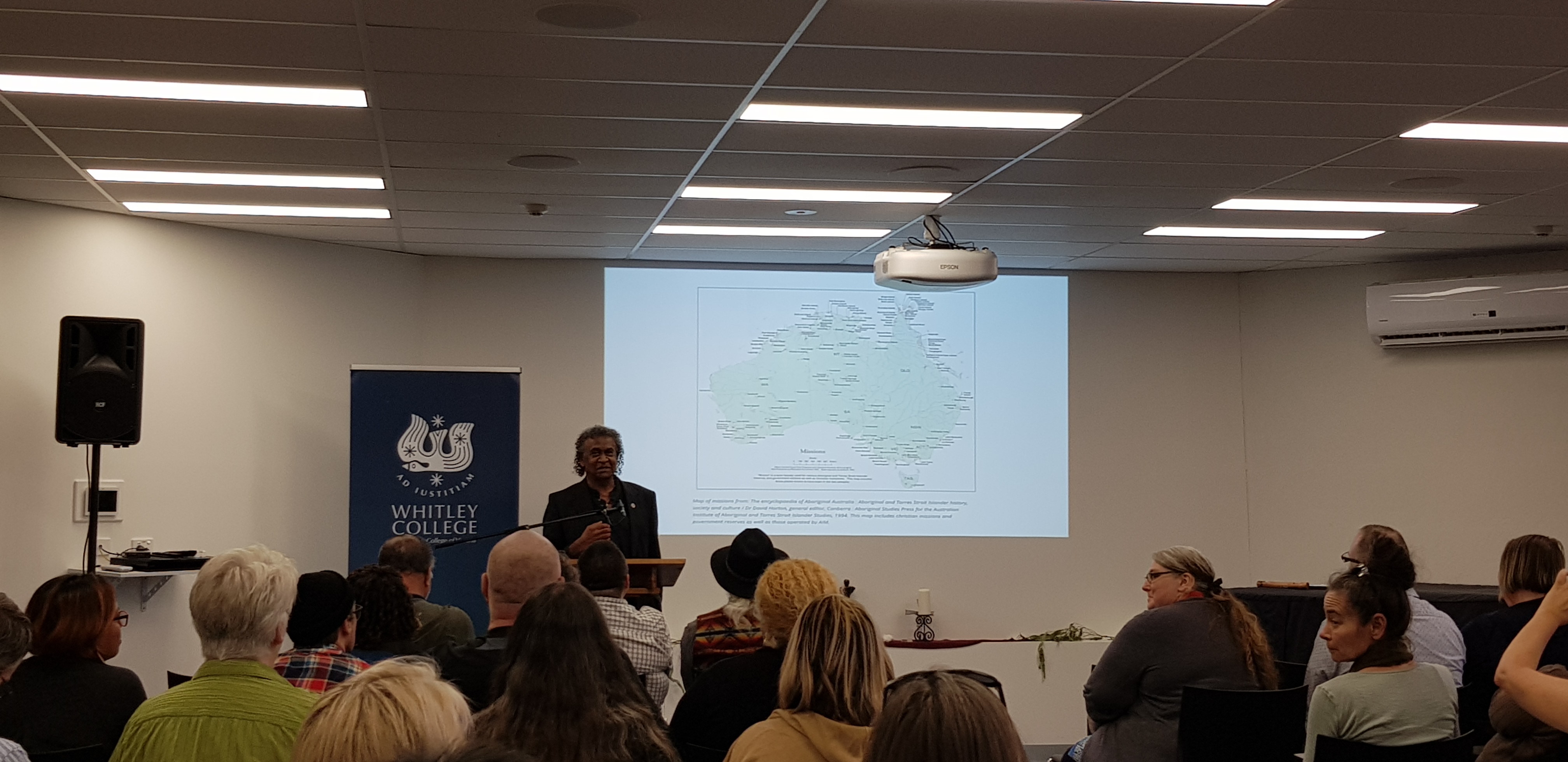
Uncle Rev Ray Minniecon: ‘Walking the Land’
How as people and pastors can we operate to be authentically indigenous and authentically Christian? I ask myself these questions:
We are always in search of our people. We meet and tell our stories. Sometimes our great, great, grandparents lived at the same mission. Did they have other brothers and sisters? We don’t always know. People from a different family, from a different mob, from a different country might hold part of our story that hasn’t been heard.
I am confronted by racism everyday. I have learned how to have faith and to draw on the strength of the ancestors… ‘so that your faith might rest not on human wisdom but on the power of God’. (1 Cor 2:5). This includes church who continue to exclude us. I’m invited to speak about aboriginal issues but not to preach the gospel. That is why I started a little congregation in community at St John’s Anglican in Glebe called ‘Scarred Tree Indigenous Ministries‘. We are grateful to work on land that has the last Scar Tree in Sydney CBD. It is a way for us to connect to our history and to the gospel. we have to confront Australia’s history as a church, neighbourhood and community. we would lose our minds, selves, souls if we don’t stand up.
TALKING CIRCLES
Someone in our group shared their story adding, “when you don’t know who you are, there are no reference points.”
Psalm 68:5-6 (NIV)
5 A father to the fatherless, a defender of widows,
is God in his holy dwelling.
6 God sets the lonely in families,
he leads out the prisoners with singing
God as Father gave me a sense of who I am. Knowing this, no one is a mistake. Then I had a moment on country in a park with sunlight… I knew I belonged to the land and felt known. Mother (Nature) – living and breathing.
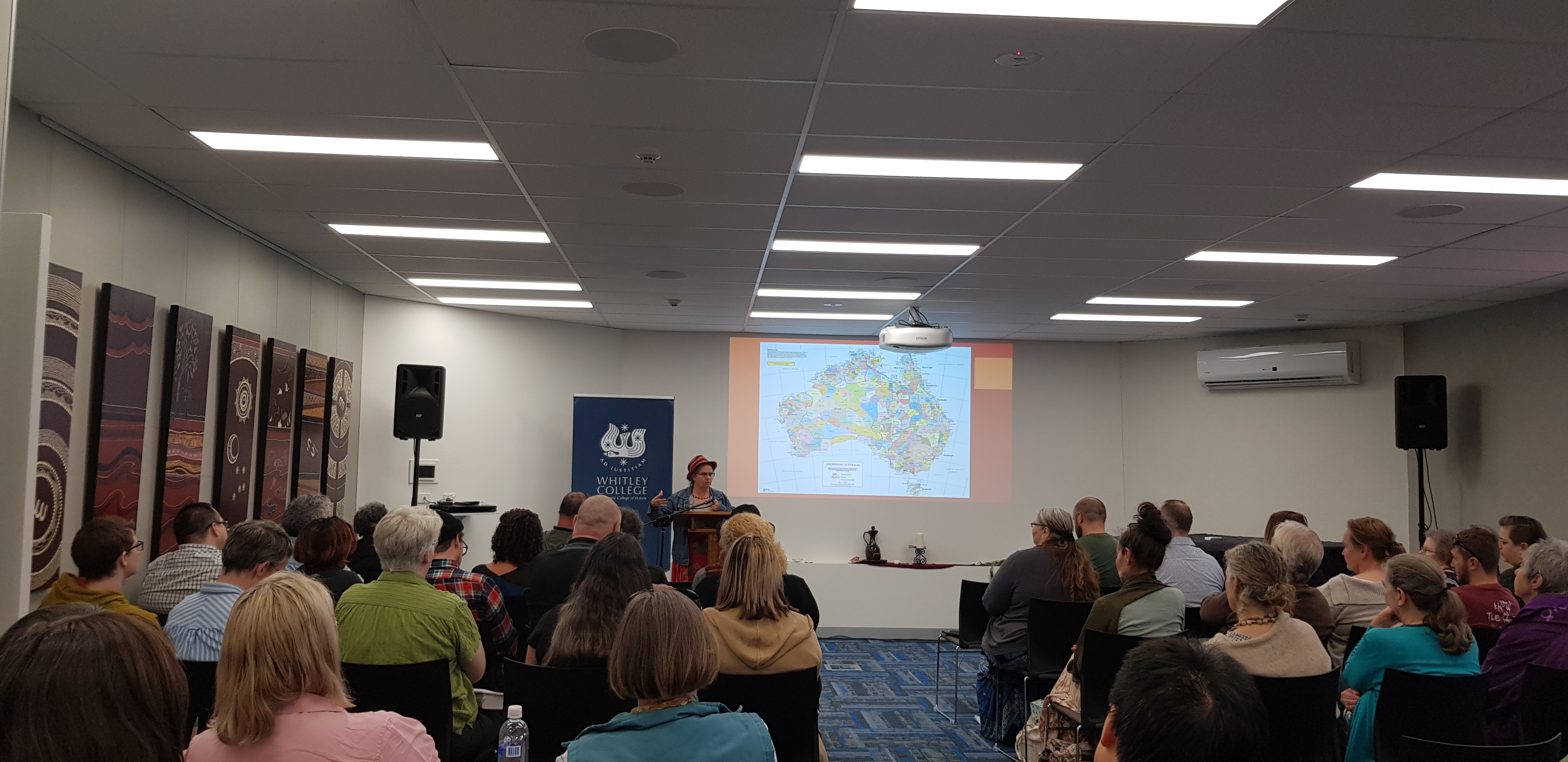
Aunty Rev Patricia Courtenay: ‘Aboriginal spirituality in an era of displacement’
IDENTITY
Where did I grow up? What country is that and what language is spoken there?
ASSIMILATION
RESPONSES
Our language is not ‘lost’, our home is not ‘lost’, we are disconnected from them.
Why would you want to identify as aboriginal?
I am supported, protected and reminded who I am by my ancestors and totem animals. My strength is in my spirituality.
How can you identify as Aboriginal and a Christian?
I can separate the faith of the missions from Christianity. There is a spiritual basis for this – acceptance of all – Jew and Gentile… 1 Cor 7:17-20. Live the life that the Lord has assigned… obey the commands of God in all things. You were provided identity at birth. Who were you called to be? Dualistic enquiry – I can be Christian without denying or giving up my cultural identity or heritage. Who I am is rooted in belonging and connectedness.
CULTURALLY SPIRITUAL WAYS OF KNOWING AND BEING
Aboriginal Australia still exists. When we gather and tell our stories ‘the land is speaking’. As guardians of the the land ‘we are speaking for the land’. The Creator Spirit/God’s relationship with indigenous people does and will continue to exist. Language, world views, etc. can be shared with those willing to listen.
CREATING AN AUSTRALIAN CHRISTIAN

Aunty Rev Janet Turpie Johnstone: ‘Bunjil weaves past and future in the present’
Wominjeka – ‘we have come together for good purpose’
When we have shared stories and place, that goes with us when we leave.
Bunjil patterns the past and future in the present. We’re not Animist, we don’t worship animals but are related to them and to the river.
Can we live with the land and waters so that everything has a place to live?
Reconciliation:
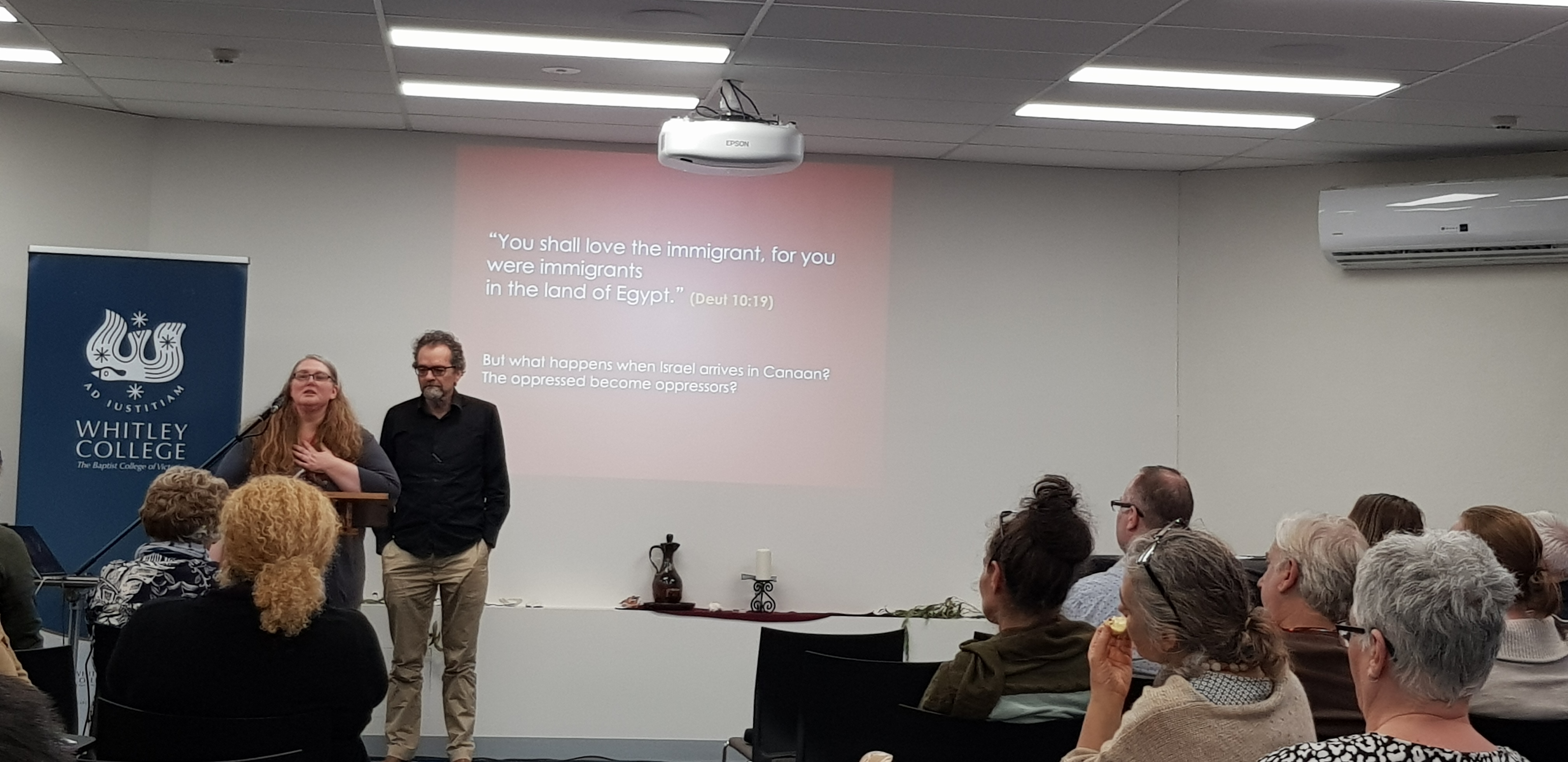
Professor Mark Brett & Naomi Wolfe: ‘Traditional Land and the Responsibility to Protect Immigrants: A Dialogue between Aboriginal Tradition and the Hebrew Bible’
“You shall love the immigrant, for you were immigrants in the land of Egypt” (Deut 10:19)
But what happens when Israel arrive sin Canaan? The oppressed become oppressors?
Indigenous mob don’t need a qualification to be who they are. But this partnership has arisen from an international journey and collaboration.
Strangers, immigrants, sojourners… it’s the story of people who took others’ land. If you don’t take care of the widow, orphans, migrants… you will lose your country.
Indigenous: country knows them, calls them home. There’s a kinship system and people are looked after. ‘no one should be left behind’
Jer 26: 8-9 and Jer 26:16-19 people hated what he had to say… except some elders. Not citing Deuteronomy but oral storytelling – there moral compass is somewhere else. In the Samaritan story, who do indigenous people see themselves as in the story? Where are the settlers in the story?
We’re all Gentiles. Settlers brought the thinking, they are the new Israel. They have the right to take the country. That’s wrong. They think they’re superior and that God is on their side. There is a theological problem with this logic. White people are not the new Israel.
There is an idea that our liberation is bound to native title, but that’s extinct in Tasmania. So what does freedom look like for those of use from there?
Reinterpreting our stories:
Every identity therefore is a construction… a composite of different histories, migrations, conquests, liberations and so on. We can deal with these either as worlds at war or as experiences to be reconciled. Edward Said.
What next?
Reading the Bible as Israel is toxic for Gentiles. Colonised people are colonising.
Our beliefs are already here, we don’t need yours. Our sacred land is right here. Our text is the land – we hear it with our feet and our hearts. It is broader and more inclusive.
We can have/give/build what was denied to earlier generations if we’re strong in culture.
Wonderful animation…
Bunjil The Creator: Bunjil’s Flight to the Stars